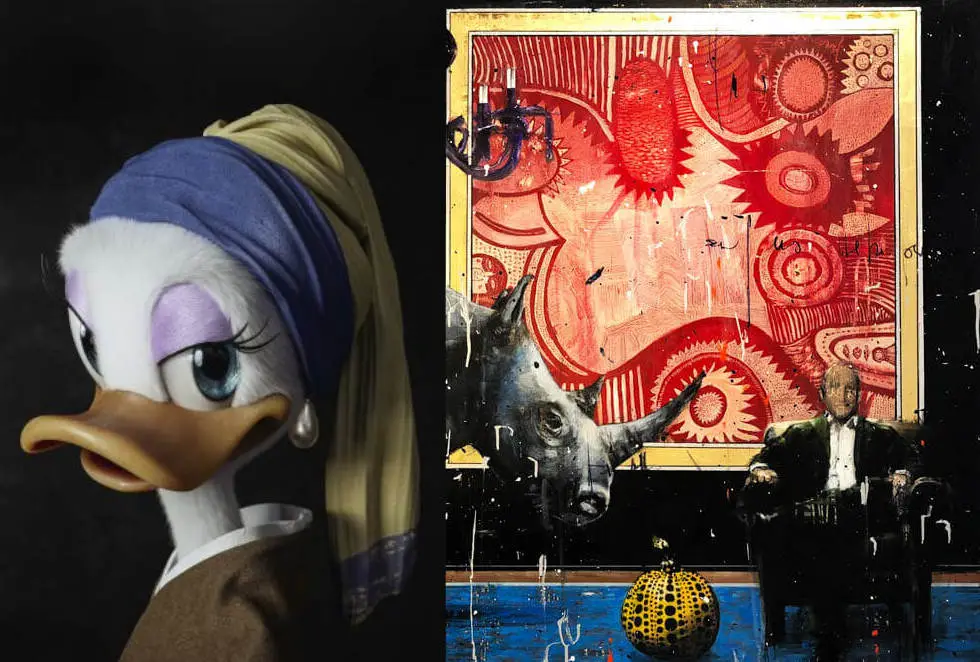
The emergence of digital art has prompted a compelling question: does it qualify as genuine art? Digital art, a term first coined in the 1980s, encompasses a wide range of creations produced using technological tools like computers, software, tablets, and cellphones. These works include computer animations, digital photographs, illustrations, videos, paintings, and even 3D sculptures, some of which have commanded hefty sums in the art world.
Related:
Turn Your Photos into Artistic Sketch using Photoshop Elements
10 Nice Photo to Cartoon Effect Photoshop Tutorials
24 Creative Ideas of Forced Perspective Photography Technique
The roots of digital art trace back to the 1960s and 1970s when visual artists ventured into uncharted territory by embracing computer technology to craft their art. Some employed mathematical algorithms to generate intricate geometric designs, while others ventured into abstract realms. In the following decades, digital art underwent a significant evolution as photographers began using digital tools to manipulate their images, giving rise to computer-generated animations and the animated films we now cherish.
Today, artists wield digital platforms to create intricate paintings on their smartphones, design intricate sculptures on tablets, or enhance hand-painted artworks through digital means. However, a debate persists regarding whether art produced without traditional manual methods deserves the title of ‘real art.’
Yes – if it’s powerful, it’s art
On one side of the debate, proponents argue that digital art unquestionably qualifies as real art. If a work, regardless of its medium, captivates, inspires awe, or elicits appreciation, it aligns with the fundamental mission of art. Embracing the digital medium is the natural evolution of art in a world increasingly dominated by digital technology. The effort, creativity, and vision artists invest in their digital creations are no less significant than those poured into traditional art forms. Moreover, the thriving market for digital art, which has seen pieces sell for millions, serves as clear evidence of its artistic and commercial value.
No – art needs the human touch
On the opposing side, detractors argue that true art must embody the human touch, crafted with physical materials like brushes, paints, canvases, clay, and chisels. Genuine art exists in the tangible realm, created through real-time, hands-on manipulation, not via computers or the click of a button. What sets a traditional work of art apart is its uniqueness; there is only one original piece. Proximity to a masterpiece by Rembrandt or a sculpture by Auguste Rodin reveals the artist’s tangible touch, evident through brushstrokes or chisel marks. This level of skill and precision is irreplaceable and cannot be replicated by digital devices.
For those who advocate that digital art indeed qualifies as art, three key reasons support their perspective:
- Art’s mission is to evoke emotions and appreciation, which digital art accomplishes effectively.
- In a world dominated by digital technology, art must naturally evolve with the times, retaining the artist’s vision, skill, and creativity.
- Art has continuously adapted to the era’s tools and technologies, making digital art the next step in this ongoing progression.
For the opposing camp, which questions the legitimacy of digital art, three primary arguments are presented:
- Real art is crafted by hand using traditional tools, a far cry from the digital realm.
- Art’s essence lies in its uniqueness, something digital art cannot offer since it can be effortlessly duplicated.
- Creating art necessitates human effort, skill, and precision, elements that digital devices cannot replicate.
The debate surrounding digital art’s status in the realm of ‘real art’ continues to provoke intriguing discussions in the art world and among enthusiasts. The evolving nature of art, technological advancements, and ever-shifting perspectives only serve to perpetuate this thought-provoking discourse.”



Comments